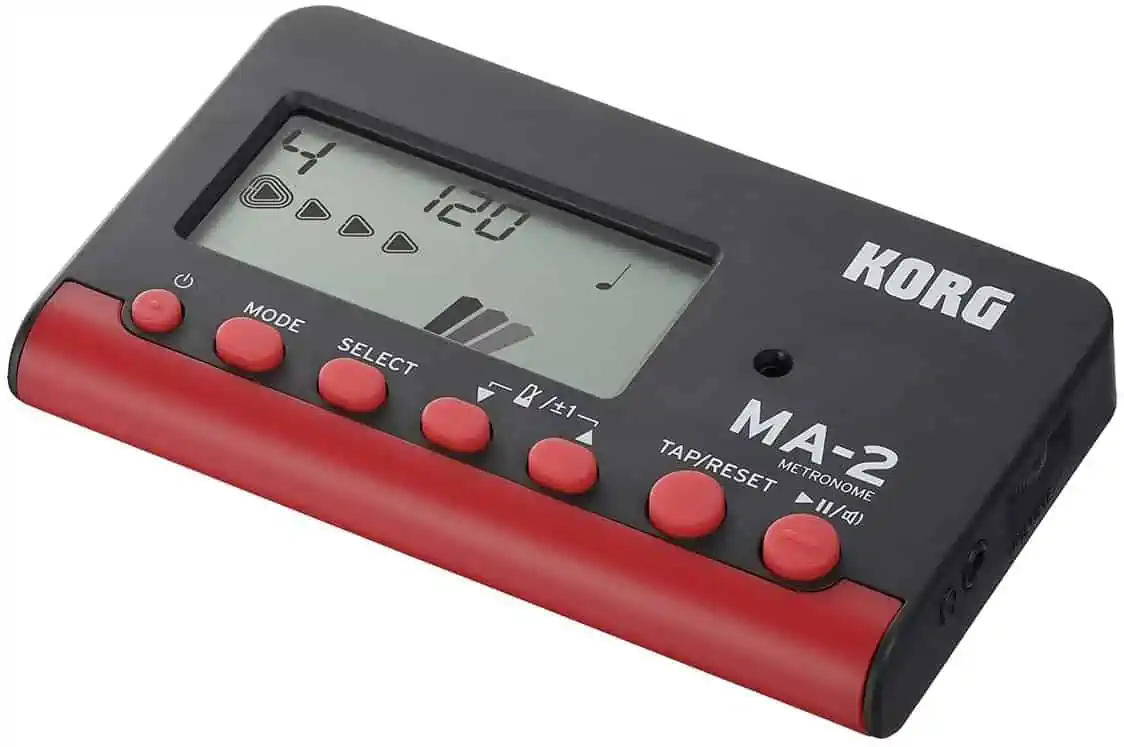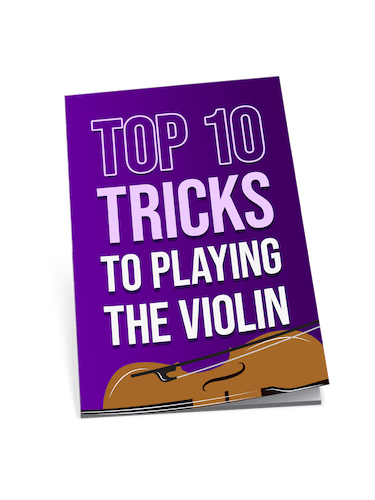Have you ever wondered why string family are so enchanting?
String instruments are the heart and soul of classical and jazz music, offering a range of sounds from the high, airy notes of the violin to the deep, rich tones of the double bass. Each instrument adds a unique flavor to the orchestra, creating harmony and melody that captivate listeners.
Whether you’re curious about how these instruments work or want to learn about their role in an orchestra, you’re in for a treat. Get ready to explore this string instruments list. Keep reading to uncover the magic behind the string family!
What is the String Family?
The String Family is a group of musical instruments that produce sound by the vibration of strings and is the largest family of instruments. The string instrument family is an important part of music history and has been around for centuries.
It is believed that the earliest stringed instrument was used in ancient Greece over 3,000 years ago! This instrument was called a lyre and it had seven strings made from sheep gut or horse hair.

The string instruments list includes various musical tools such as the violin, viola, cello, double bass, guitar, harp, and many others. Each contributes its distinct timbre and playing technique to the world of music.
The characteristics of string instruments include their ability to produce a wide range of expressive tones through the vibration of strings, as well as their versatility in both solo and ensemble settings. Exploring the list of string instruments reveals the rich diversity and cultural significance of these melodic and versatile tools across different genres and traditions.
Modern stringed instruments use metal strings to create louder sounds than their predecessors did with nylon or gut strings. As technology continues to advance, so do the capabilities of these instruments allowing musicians to create unique sounds with each performance.
Violin
Playing Range: The violin can play notes from G3 to A7, the highest sounds of the string family.
Characteristics & Function: The violin is a stringed instrument, made of wood, that is usually played with a bow. It is the smallest and highest-pitched instrument in the string family. Violins are typically used in classical music, but they can also be used in other genres of music.

About The Violin: The violin family was first invented in the 16th century. It is typically made out of wood, and it has four strings.
Age To Start Playing: Children typically start playing the violin at around the age of six or seven, but it’s possible to get violins that are really small, and suitable for children aged three plus.
Viola
Playing Range: The viola playing range is from C3 to E6
Characteristics & Function: The viola has a warmer sound than the violin and is often used in classical music. It sits between the violin and the cello in playing range and sound and is the glue that holds harmony together.
About The Viola: The viola is a string instrument that is slightly larger than a violin. It has a deeper sound than the violin and is typically played in the lower register. The viola is often used in chamber music settings and as a solo instrument.

Age To Start Playing: The viola is typically played by people who are 14 years old or older.
Cello
Playing Range: The cello can be played from low to high notes, making it a versatile instrument for a wide range of music styles. Its range is from C2 to C6.
Characteristics & Function: The cello is typically used in classical music, but it has also been incorporated into other genres such as jazz and popular music. It is a bowed string instrument with four strings that are plucked with the fingers. The cello has a deep and mellow cello sound that is perfect for accompanying other instruments or soloing.

About The Cello: The cello is one of the oldest stringed instruments and has been around since the 16th century. It is typically made out of wood, hollow inside, and a curved front. The cello is played while seated and rests on the player’s left leg.
Age To Start Playing: There is no set age to start playing stringed instruments like the cello, but most children begin at around 7 or 8 years old.
Double Bass
Playing Range: The double bass playing range is from C2 to C5 and is typically used in orchestras and jazz bands.
Characteristics & Function: The double bass is the largest and lowest-pitched instrument in the string family. As the largest string instrument, the double bass commands attention with its commanding presence and rich, low-end sound.

About The Double Bass: The Double Bass is believed to have originated in the middle east in the 1500s, but is now the foundation of all symphony orchestras.
Age To Start Playing: The age to start playing the double bass varies depending on the child’s size and maturity level. Typically, children around the age of 10 are ready to start playing the double bass.
Harp
Playing Range: The harp playing range is typically from Cb1 to F#7.
Characteristics & Function: The harp is a stringed instrument that is typically placed on the floor in front of the player. It has a large, triangular body with a curved top and bottom. Harps have a total of 47 or 49 strings that are divided into two groups: the treble strings and the bass strings. The treble strings are played with the right hand, while the bass strings are played with the left hand.

About The Harp:Harp history is a long and varied one. It is thought to have originated in Mesopotamia around 4,000 years ago. Harps have been around for thousands of years, and have been used in many different ways. One of the earliest harps was found in a tomb in Ireland, and it is believed to date back to 3000 BC. Harps were used in religious ceremonies and as a symbol of royalty. They later spread to Egypt, Greece, and Rome. Over the centuries, the design of the harp has changed and evolved. Today, it is a popular instrument for classical music and folk music.
Age To Start Playing: There is no definitive answer to this question as it depends on the individual. Some children may be ready to start playing the harp at age 5, while others may not be ready until age 10 or even older. It is important to find a teacher who can work with the student’s individual abilities and help them develop at their own pace.
History Of The String Family
The strings family of musical instruments has a long and fascinating history. Throughout the centuries, all the stringed instruments have been used in symphonies, operas and other forms of music to create beautiful sounds.
From its origins in ancient Asia to its modern-day use in classical music ensembles and jazz bands alike, the string family has been an integral part of many cultures’ musical heritage. Over time, various techniques have been developed to enhance the sound of stringed instruments and make them more versatile.

The earliest versions of these instruments were simple wooden boxes with strings stretched across them; over time, they evolved into sophisticated machines capable of producing complex harmonies. As technology advanced through the centuries, so did the craftsmanship of these instruments: luthiers began adding intricately carved details that added visual beauty while also improving sound quality.
Today’s string family is a diverse collection of different shapes and sizes that can be found in virtually any style of music – from folk tunes to classical sonatas to rock riffs.
How Do I Choose Which String Instrument To Play?
Choosing the right string instrument to play can be a daunting task. It’s important to take into account your musical interests, how much time you’re willing to commit to practice, and what type of sound you’d like to create. Here are a few tips that will help you make the right decision:
1. Consider your skill level: Different instruments require different levels of skill, so it’s important to think about your experience and skill level before choosing an instrument. If you’re a beginner, consider starting with a simpler instrument like the violin, which are relatively easy to learn and master.
2. Think about size: String instruments come in different sizes, so consider how much space you have available for an instrument before making a purchase. Smaller instruments like a viola are great for those who don’t have much room in their home for practice.
3. Listen carefully: Most music stores will allow customers to try out different instruments before purchasing them, so take advantage of this opportunity! Listen closely to the tone of each instrument and go with whichever one resonates with you the most.
If you’d like to find out what is the easiest string instrument to learn, read our article here.
What Accessories Should All String Players Have?
There are some tools you just can’t do your job without! Playing a stringed instrument is no different, and here we list there three main accessories that every string player, regardless of instrument, shouldn’t live without.

DESIGNED FOR: Violin & Viola
COMES WITH: Premium case that is designed for one-handed use
FEATURES: The original low-dust recipe handed down from Ladislav Kaplan
D'Addario Kaplan
When you check the price above, you’ll see there are loads of great places to buy this item. Our personal favorite is Gear4music.
It is the largest music retailer in the UK and fast becoming the most respected online music shop in the US too. Their customer service is excellent, they have competitive prices, really fast shipping, and usually have the longest guarantee.
Most professional musicians use Gear4music, so there is no reason why you shouldn’t too!
- Amazing Case
- Low Dust
- A Pleasure To Use
- None!
The professional musician who wrote this article combined many things,
from the product build, manufacturer’s reputation through to feedback
from other users, to create our famous TedScore™.

DESIGNED FOR: Opening the case one-handed
COMES WITH: Premium Case
USES: The original recipe handed down from Ladislav Kaplan
D'Addario Kaplan Dark Rosin
When you check the price above, you’ll see there are loads of great places to buy this item. Our personal favorite is Gear4music.
It is the largest music retailer in the UK and fast becoming the most respected online music shop in the US too. Their customer service is excellent, they have competitive prices, really fast shipping, and usually have the longest guarantee.
Most professional musicians use Gear4music, so there is no reason why you shouldn’t too!
- Amazing Case
- Low Dust
- A Pleasure To Use
- None!
The professional musician who wrote this article combined many things,
from the product build, manufacturer’s reputation through to feedback
from other users, to create our famous TedScore™.

DESIGNED FOR: 400 hours of continuous operation
COMES WITH: A larger and more easily readable display
FEATURES: Timer, enhanced volume, and a useful 'sound-out' mode
Korg MA-2 metronome
When you check the price above, you’ll see there are loads of great places to buy this item. Our personal favorite is Gear4music.
It is the largest music retailer in the UK and fast becoming the most respected online music shop in the US too. Their customer service is excellent, they have competitive prices, really fast shipping, and usually have the longest guarantee.
Most professional musicians use Gear4music, so there is no reason why you shouldn’t too!
- Has a Tap Tempo function, making it super easy to use
- Earphone jack with adjustable volume
- Stylish display
- Compact - so easy to travel
- None!
The professional musician who wrote this article combined many things,
from the product build, manufacturer’s reputation through to feedback
from other users, to create our famous TedScore™.
If you’d like to see more accessories that string players use, read our 17 Must-Have Accessories For String Players article.
String Family
Summary
The string family is an incredible section within the orchestra and contains five amazing instruments. The violin, viola, cello, and double bass are all part of the string family instruments, known for their versatile roles in classical, jazz, and contemporary music.
It doesn’t matter which instrument you choose, as long as you have a love and desire to pick it up and start making music!
If you’ve enjoyed this article, do pop a comment below, and sign up for our 4 Feature Friday emails to get a once-per-week email celebrating the amazing world of string instruments.
FAQ's
The string family includes the violin, viola, cello, double bass and harp. These instruments are played with a bow or plucked with the fingers. They all produce sound by vibrating strings which are made of metal.
Violin, viola, cello, double bass (sometimes called an upright bass) and harp.
The string family in music refers to a group of instruments that produce sound through the vibration of strings, including the violin, viola, cello, double bass, and various other instruments like the guitar and harp. These instruments are integral to classical, jazz, folk, and contemporary music, contributing rich tones and diverse playing techniques to musical compositions.
The highest pitched instrument in the string family is the violin, known for its bright and soaring sound that often takes the lead in orchestral and chamber music.











Interesting article, Mark Gibbs. However, I think it’s crucial to address the evolving role of string instruments in contemporary music. While traditional roles in classical settings are significant, strings have increasingly crossed over into pop, rock, and even electronic music. This versatility demonstrates the instruments’ adaptability and relevance in diverse genres. It might be beneficial for aspiring musicians to explore and embrace these varied opportunities.
So happy to see the harp getting some recognition! It’s not just for angels, you know. It has such a unique sound and adds so much to any piece. Plus, it’s just beautiful to look at.
double bass doesn’t get enough love man it’s like the backbone of the orchestra
Hey, Mark Gibbs, I’m considering joining my school’s orchestra and I’ve been tossing up between the violin and the viola. Could you maybe give me some pros and cons for each? I’ve read they’re kinda similar but the viola has a deeper sound, right? Also, does one have a steeper learning curve than the other? Thanks!
ElizaTunes, either way, you’re going to have a great time! Both instruments are amazing and have unique qualities.
Hey, ElizaTunes! Violins play more melody in orchestras, while violas often get harmonies which are super cool. Violas are a bit bigger, so your hands might need to stretch more. But both are awesome to play, and it really depends on what sound you like more!